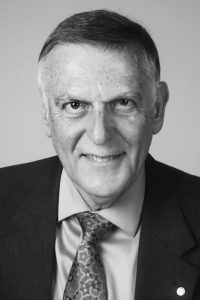This event is free and open to the public.
Speaker: Dan Shechtman, Nobel Laureate and Iowa State University Distinguished Professor of Materials Science and Engineering

Title: Quasi-Periodic Materials – Crystal Redefined
Abstract: Crystallography has been one of the mature sciences. Over the years, the modern science of crystallography that started by experimenting with x-ray diffraction from crystals in 1912, has developed a major paradigm – that all crystals are ordered and periodic. Indeed, this was the basis for the definition of “crystal” in textbooks of crystallography and x-ray diffraction. Based upon a vast amount of experimental data, constantly improving research tools, and deepening theoretical understanding of the structure of crystalline materials no revolution was anticipated in our understanding the atomic order of solids.
However, such revolution did happen with the discovery of the Icosahedral phase, the first quasi-periodic crystal (QC) in 1982 and its announcement in 1984 [1, 2]. QCs are ordered materials, but their atomic order is quasiperiodic rather than periodic, enabling formation of crystal symmetries, such as icosahedral symmetry, which cannot exist in periodic materials. The discovery created deep cracks in this paradigm, but the acceptance by the crystallographers’ community of the new class of ordered crystals did not happen in one day. In fact it took almost a decade for QC order to be accepted by most crystallographers. The official stamp of approval came in a form of a new definition of “Crystal” by the International Union of Crystallographers. The paradigm that all crystals are periodic has thus been changed. It is clear now that although most crystals are ordered and periodic, a good number of them are ordered and quasi-periodic.
While believers and nonbelievers were debating, a large volume of experimental and theoretical studies was published, a result of a relentless effort of many groups around the world. Quasi-periodic materials have developed into an exciting interdisciplinary science.
This talk will outline the discovery of QCs and discuss their structure as well as some of their properties.
Bio: Dan Shechtman earned his Bachelor’s of Science, Master’s of Science, and Ph.D. degrees at the Technion in Israel, in the field of Materials Engineering. He did postdoctoral work, supported by a fellowship from the National Research Council, at the Wright Patterson Air Force Base (USA) from 1972 to 1975. In 1975 he accepted a position as Lecturer at the Technion, and rose through the academic ranks there to become Distinguished Professor and to hold the Philip Tobias Chair. During his years at the Technion, he also held positions as visiting scientist at several U.S. institutions, including the National Institute of Standards and Technology (NIST). In 2004, he accepted a partial appointment at Iowa State University as a Professor of Materials Science and Engineering, and a position as Associate of the Ames Laboratory. In 2011 he was awarded the Nobel Prize in Chemistry for his discovery of quasicrystals. He made this discovery while working at NIST on April 8, 1982, and he championed it in the years that followed. This ignited a scientific revolution that changed the way we understand solid matter. His courage and clarity of vision during that turbulent, exciting period are an inspiration to scientists everywhere. He has won numerous other prizes for this achievement, including the International Award for New Materials of the American Physical Society (1987), the Wolf Prize in Physics (1999), and the European Materials Research Society’s 25th Anniversary Award (2008) — to name just a few.